In today’s B2B world, buyers expect more than competitive pricing and robust features—they demand seamless, intuitive digital experiences. A poorly designed platform or cumbersome form can turn even the most interested prospect away, while a frictionless experience can position your brand as modern, professional, and trustworthy. Paying specific attention to your user experience (UX) is no longer optional; it’s a strategic differentiator that can shape how your brand is perceived in the market.
From microsites to enterprise platforms, frictionless UX allows B2B brands to capture attention, build trust, and drive conversions. In this post, we’ll explore why UX is the new competitive edge in B2B marketing and how companies can leverage it to stand out.

Why UX Matters in B2B Today
The expectations of B2B buyers have evolved dramatically in the last decade. Business decision-makers now compare digital interactions in professional contexts with experiences they have in their personal lives. Slow-loading pages, confusing navigation, or lengthy forms can result in immediate disengagement.
Statistics show that over 70% of B2B buyers abandon websites that are difficult to navigate or too slow to load. A clunky experience is more than an inconvenience—it can directly impact lead generation, conversion rates, and long-term brand perception.
Moreover, friction in the user journey signals inefficiency and unprofessionalism, even if the product itself is top-tier. Conversely, companies that prioritize B2B user experience demonstrate thoughtfulness, credibility, and attention to detail. These subtle cues influence trust and can tip the scales in competitive purchasing decisions.
Friction Points That Hurt B2B Conversions
Understanding where friction occurs is the first step toward creating a seamless experience. Common pain points include:
- Overly Complex Forms: Lengthy, confusing forms discourage completion and lead to lost leads.
- Slow Microsites: Microsites are often designed for campaigns or events, but poor performance can damage the brand’s reputation.
- Disjointed Platform Navigation: When users can’t intuitively find what they need, engagement drops and frustration grows.
- Inconsistent Branding Across Touchpoints: Visual and messaging inconsistencies between platforms, emails, and microsites can create confusion and erode trust.
Each of these friction points reduces engagement and can silently cost revenue. B2B buyers are increasingly unforgiving of digital obstacles, making frictionless UX a critical element of brand strategy.
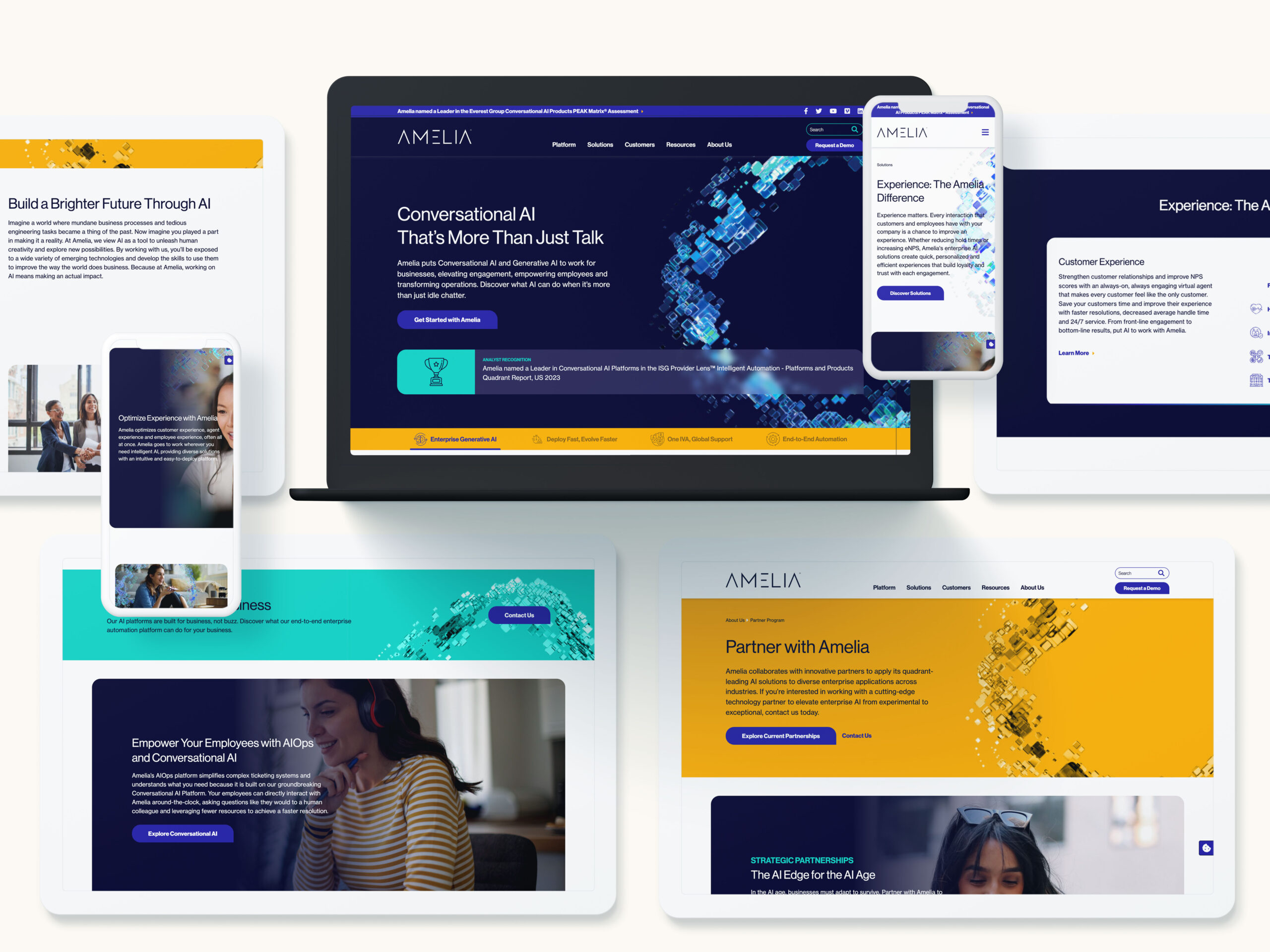
Frictionless UX as a Differentiator
While price and features have historically been the primary differentiators in B2B markets, UX is emerging as a decisive factor. A frictionless experience signals professionalism, innovation, and customer-centricity—qualities that buyers value alongside product capabilities.
Imagine two SaaS platforms with similar features and pricing. One has a seamless onboarding experience, intuitive navigation, and consistent branding across its website, forms, and dashboard. The other feels clunky, inconsistent, and slow. Even if both solutions deliver the same results, the user is far more likely to adopt and advocate for the platform with better UX.
In effect, UX can amplify your other differentiators, making it as important as pricing, product features, and customer service. For modern B2B brands, frictionless UX is a strategic lever for differentiation.
Designing for a Frictionless B2B Experience
Creating a seamless digital experience requires intentional design across every touchpoint. Key principles include:
- Simplicity: Remove unnecessary steps and streamline processes. A clean, focused interface reduces cognitive load.
- Speed: Optimize page load times and form interactions to prevent frustration and abandonment.
- Intuitive Navigation: Ensure users can find critical information quickly and naturally.
- Consistent Branding: Align visual design, messaging, and tone across platforms, microsites, and forms.
- Responsive Design: Experiences must work seamlessly across devices, from desktops to smartphones.
In addition, B2B brands should consider microsites and forms as critical touchpoints rather than afterthoughts. Campaign microsites should reflect the main site’s brand while delivering a frictionless journey tailored to the audience. Forms should balance lead capture with usability, asking only for essential information at the right moment.
By implementing these principles, companies can turn digital interactions into competitive advantages, rather than mere transactional steps.
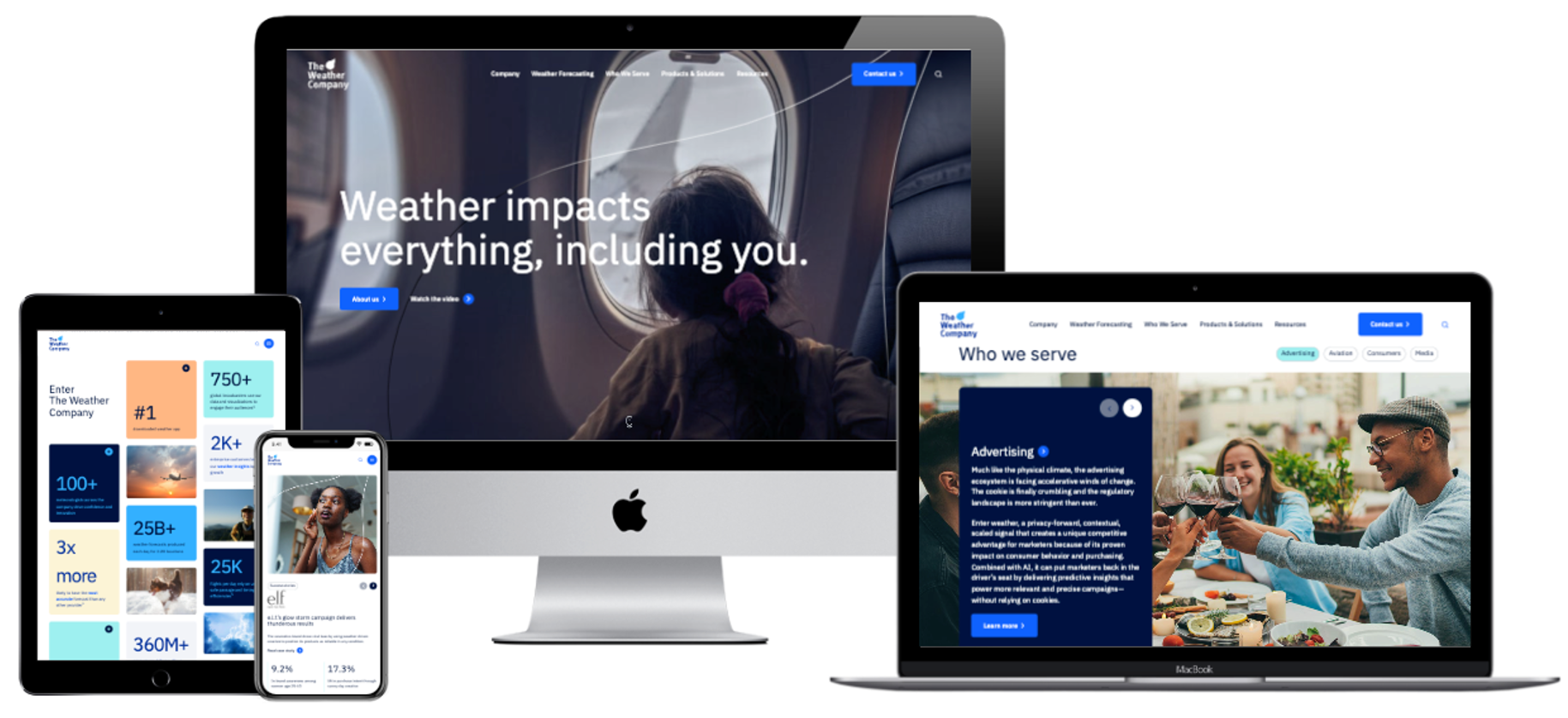
Measuring UX Success in B2B
To ensure your UX efforts are driving results, measurement is essential. Key metrics include:
- Conversion Rates: Are users completing forms, signing up for demos, or making purchases?
- Form Completion Rates: High abandonment indicates friction points.
- Platform Engagement: Track session duration, click paths, and feature adoption.
- Net Promoter Score (NPS) and Customer Feedback: Qualitative insights reveal how users perceive your experience.
These metrics allow teams to iterate and refine digital experiences continuously. By embedding UX evaluation into B2B marketing and sales strategy, organizations can quantify the impact of frictionless design on revenue and brand perception.
Looking Ahead: UX as a Strategic Lever
The future of B2B UX is tied to personalization, AI-driven interfaces, and predictive design. Brands that prioritize frictionless experiences now are positioning themselves for long-term differentiation. Companies that fail to invest in UX risk being perceived as outdated or inefficient, regardless of how compelling their products or pricing may be.
By making UX a central element of B2B differentiation, organizations can improve conversion rates, enhance brand perception, and create loyal advocates among buyers who expect professional, intuitive experiences.
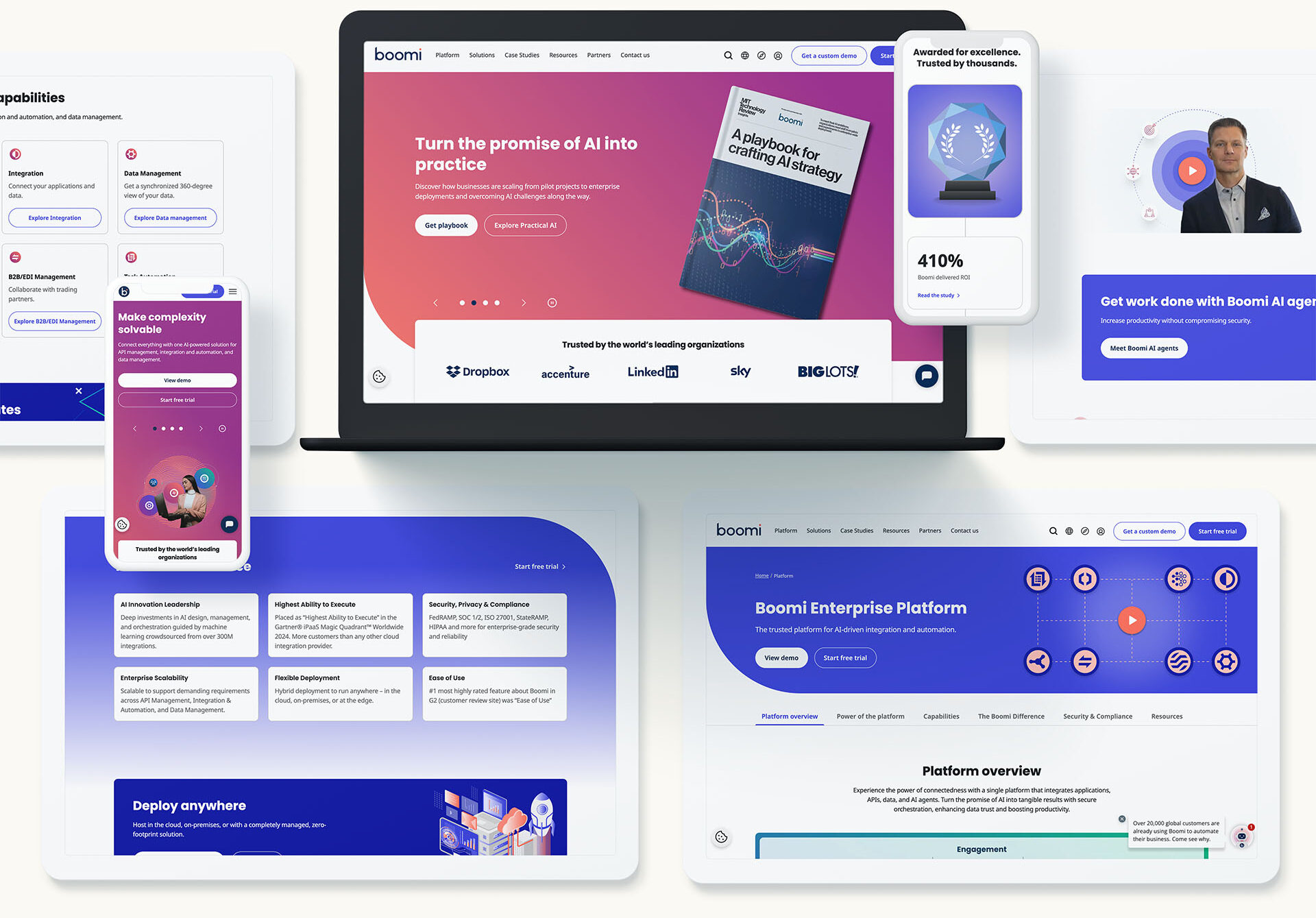
Take the Next Step: Make Your UX a Differentiator
In the modern B2B landscape, user experience is no longer a secondary consideration—it’s a powerful lever for differentiation. From digital platforms to campaign microsites and lead capture forms, frictionless UX can elevate your brand, increase conversions, and strengthen customer loyalty.
Federal technology companies face a unique marketing challenge. They build highly sophisticated tools that solve complex mission needs—yet communicating those capabilities in a way that resonates with government buyers is no small task. Acronyms, technical jargon, and dense feature lists rarely inspire decision-makers. What does? Storytelling.
The most successful federal contractors and technology innovators know how to translate capabilities into clear, compelling narratives. They move beyond “what we do” and focus on “why it matters”—to the mission, to the warfighter, to the public sector customer. In today’s competitive federal landscape, storytelling is the difference between blending into the noise and standing out with a campaign that truly resonates.
Why Storytelling Matters in Federal Tech Marketing
Capabilities on their own don’t sell. Every Fed Tech firm has engineers, IP, and technical differentiators. What separates leaders from the pack is the ability to shape those capabilities into stories that drive impact.
- Decision-makers buy outcomes, not specs. A CIO isn’t persuaded by a list of features. They want to know how a solution enhances readiness, improves security, or reduces cost.
- Complex missions need simple narratives. Government missions are layered and multifaceted. Storytelling makes those missions relatable, focusing on impact rather than complexity.
- Trust is built through clarity. When you distill advanced technology into a human story, you show that you understand your audience’s priorities—not just your product’s features.
The federal buying process is long and competitive. Effective storytelling helps position your brand at the top of the shortlist by aligning your narrative with the mission at hand.

From Capability to Campaign: Building the Narrative Framework
Translating federal tech capabilities into campaigns requires structure. It’s about creating a narrative framework that connects the dots between what your company does and why it matters.
- Start with the mission. Anchor your story in the government agency’s core mission: national security, citizen services, space exploration, or digital modernization.
- Define the challenge. Frame the “why” by highlighting the barriers or inefficiencies that agencies face.
- Introduce the capability. Position your solution as the enabler of mission success—not the hero itself.
- Highlight the outcome. Show measurable impact: faster decision-making, enhanced resiliency, improved collaboration.
- Elevate the human element. Connect the dots to the people behind the mission—warfighters, civil servants, or end-users.
This narrative foundation becomes the spine of a campaign, ensuring every creative asset ties back to a cohesive and resonant story.
Campaign Tactics That Bring Federal Tech Stories to Life
Once the narrative is built, it’s time to translate it into channels and formats that reach the right decision-makers. For federal tech companies, some of the most effective campaign tactics include:
- Video storytelling: Short videos that show how a solution impacts the mission—whether through a warfighter’s perspective or a CIO’s voice—are more memorable than feature sheets.
- Interactive demos: Rather than presenting static slides, interactive content lets buyers see how capabilities translate into real-world results.
Thought leadership content: Blogs, whitepapers, and op-eds that frame solutions in the context of policy priorities build credibility. - Tradeshow activations: Federal events like AFCEA, GEOINT, and AUSA are opportunities to translate capabilities into immersive, story-driven experiences.
- Digital campaigns: Targeted LinkedIn ads and social content help extend the campaign story to specific buyer personas.
Each channel reinforces the same narrative thread, ensuring consistent and compelling storytelling across touchpoints.
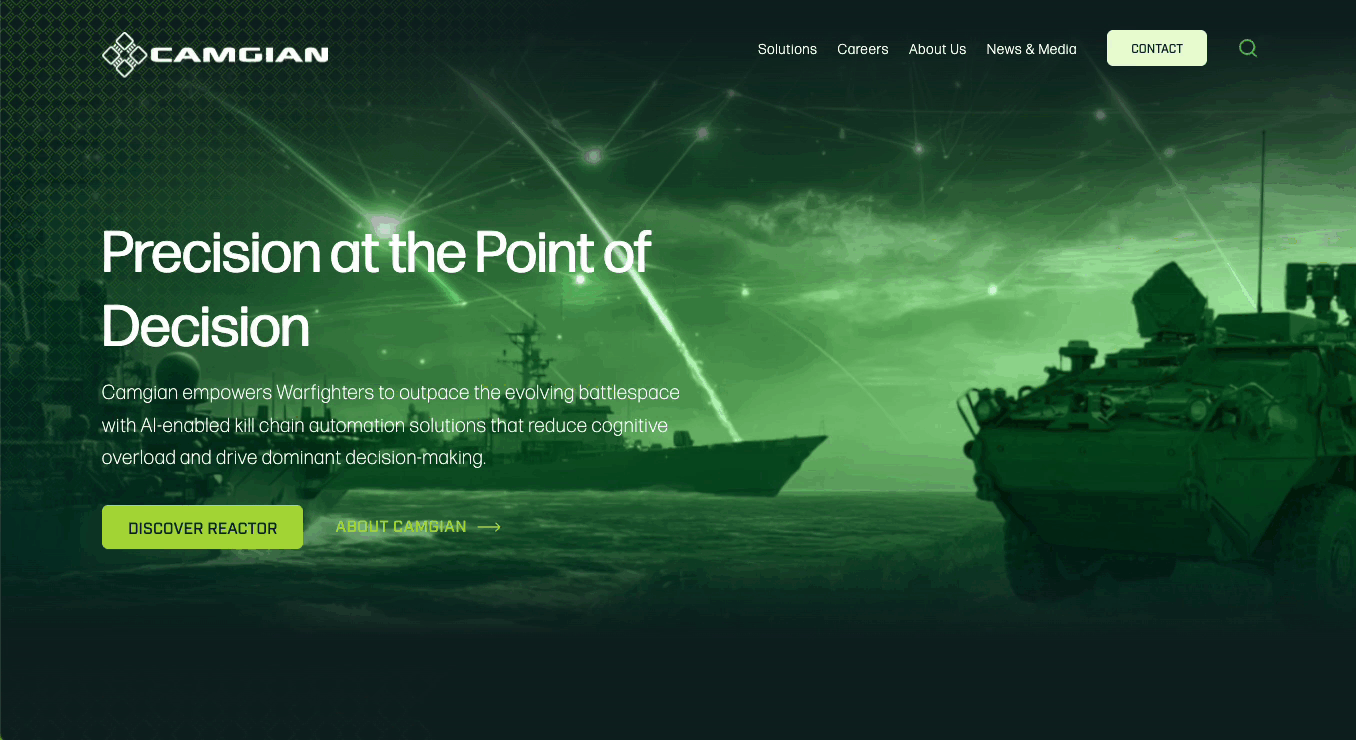
Examples of Storytelling in Federal Tech
While we can’t share client details directly, here are common storytelling approaches that federal tech leaders have successfully used:
- The Mission Hero: Campaigns that highlight how the technology empowers the warfighter or civil servant, shifting the spotlight from the brand to the end-user.
- The Future-Ready Agency: Narratives that position capabilities as enablers of digital transformation, showing how an agency can adapt to tomorrow’s challenges today.
- The Trusted Partner: Storylines that underscore reliability, security, and trust—qualities that are critical in the federal space.
These archetypes simplify complex offerings and frame them in ways that resonate with federal audiences.
Best Practices for Fed Tech Storytelling Campaigns
To turn technical capabilities into high-performing campaigns, federal marketers should keep a few best practices in mind:
- Avoid acronym overload. Speak in human terms. Technical buyers still respond better to stories than to alphabet soup.
- Balance detail with clarity. Provide enough specificity to show credibility, but always lead with outcomes.
- Leverage visuals. Infographics, animations, and data visualizations make abstract capabilities tangible.
- Segment audiences. Tailor the story differently for decision-makers, influencers, and end-users.
- Measure resonance. Track not just clicks, but engagement with the narrative—are audiences spending time with your content, watching your videos, or downloading assets?
By following these practices, campaigns achieve the rare balance of being both technically accurate and emotionally compelling.

The Future of Federal Tech Marketing: Story-First Strategies
Federal agencies are facing unprecedented challenges—from evolving cyber threats to space-based operations to citizen experience modernization. As missions grow more complex, the need for clarity in communication grows stronger.
The future of Fed Tech marketing lies in story-first strategies: campaigns that distill advanced technologies into human-centric narratives that resonate with both the technical buyer and the mission stakeholder. The brands that master this will not only win contracts, they’ll also shape the conversation around the future of federal innovation.
Turn Capabilities into Campaigns That Resonate
Capabilities may win engineers’ respect, but stories win contracts. For federal technology firms, success lies in building campaigns that move beyond features to highlight mission impact, human outcomes, and national importance.
At Bluetext, we specialize in helping federal tech companies shape their capabilities into compelling stories that stand out in a crowded marketplace. If you’re ready to transform your technical strengths into campaigns that resonate with the federal audience, contact us today to start building your story.
Government contracting is a high-stakes, highly competitive market. With more government buyers turning to AI-powered generative search tools to quickly find trusted vendors and solutions, Answer Engine Optimization (AEO) has become a critical strategy for GovCon firms. AEO ensures your capabilities, certifications, and past performance are prominently featured in AI-generated procurement insights.
Why AEO is a Game Changer for GovCon Firms
Generative AI engines prioritize content that is structured, authoritative, and aligned with the specific needs of government procurement officers. Optimizing for AEO means your firm can:
- Increase visibility in AI-powered contract searches.
- Clearly communicate your compliance and certifications.
- Provide quick, AI-friendly access to past performance and capabilities.
AEO Strategies Tailored for GovCon
1. Publish Detailed Capability Statements
Create well-organized pages that succinctly describe your services, certifications, and unique differentiators, formatted for easy AI extraction.
2. Develop FAQ Sections Targeted at Procurement Queries
Anticipate government buyers’ common questions and provide concise, authoritative answers on contract processes, compliance, and requirements.
3. Use Schema Markup to Highlight Contract Awards and Partners
Structured data can showcase your contract wins, strategic partnerships, and affiliations, signaling credibility to AI engines.
4. Share Data-Driven Past Performance Case Studies
Provide detailed, metrics-focused examples of successful government projects to help AI systems assess your qualifications.
5. Maintain Up-to-Date Compliance Information
Regularly update content on certifications, registrations (like SAM.gov), and regulatory compliance to stay relevant in AI-generated results.
Benefits of AEO for GovCon Firms
- Improves discoverability by procurement officers using AI chatbots.
- Shortens the procurement research cycle with AI-summarized insights.
- Positions your firm as a trusted, capable partner in government contracting.
Challenges and Tips for Effective AEO in GovCon
- Avoid overly technical language that confuses AI.
- Keep content factual and regularly updated.
- Ensure your website architecture supports easy navigation and AI indexing.
Answer Engine Optimization is transforming how GovCon firms connect with government buyers in an AI-driven marketplace. By investing in AEO today, you can gain a critical advantage in winning contracts and building lasting government relationships.
Bluetext specializes in helping GovCon firms master AEO strategies tailored for the unique demands of government procurement. Contact us to get started on your AEO journey.
Cybersecurity is a field where accuracy, trust, and timely information are paramount. As government agencies, enterprises, and individuals increasingly rely on AI-powered generative engines to seek security advice and solutions, cybersecurity companies must adapt by optimizing their digital content for these AI platforms. This process, known as Answer Engine Optimization (AEO), helps ensure your brand is seen as authoritative and reliable in AI-driven search results.
What Makes AEO Essential for Cybersecurity Firms?
Generative AI models rank content based on context, relevance, and trustworthiness. For cybersecurity companies, this means producing clear, accurate, and detailed content that addresses complex security topics without overwhelming AI engines or users. AEO enables your firm to:
- Educate potential clients effectively.
- Build brand authority in a crowded market.
- Increase visibility in AI-powered searches related to cyber threats, compliance, and best practices.
Key AEO Best Practices for Cybersecurity
1. Publish Actionable Threat Analyses
Regularly update your website with clear, concise analyses of current cybersecurity threats, trends, and mitigation strategies. AI engines prioritize up-to-date, fact-based content.
2. Develop Glossaries and FAQs for Industry Jargon
Help AI models understand complex cybersecurity terms by creating well-organized glossaries and FAQs that explain acronyms, technologies, and regulations.
3. Use Structured Data to Highlight Certifications
Implement schema markup to showcase your company’s certifications, compliance standards, and awards, increasing trust signals to AI engines and users.
4. Share Data-Driven Case Studies
Demonstrate your expertise and results with detailed case studies that provide specific metrics and outcomes, helping AI systems validate your authority.
5. Write for Clarity and Precision
Avoid overly technical language where possible and focus on delivering clear, precise explanations to assist AI comprehension and user understanding.
The Role of AEO in Cybersecurity Marketing
Adopting AEO tactics can transform your cybersecurity marketing by:
- Improving your content’s chance of being cited by AI in answer boxes and chatbots.
- Enhancing educational outreach to prospects and stakeholders.
- Strengthening trust and credibility through authoritative content signaling.
Avoiding Common AEO Mistakes
- Don’t overstuff keywords or jargon, which can confuse AI engines.
- Avoid publishing outdated security info that undermines your credibility.
- Ensure your site loads quickly and is mobile-friendly for better AI indexing.
The cybersecurity landscape demands precision and trust—two qualities that AEO optimization amplifies for AI-driven search. Bluetext is ready to help cybersecurity firms build content strategies that excel in the generative AI era. Reach out to us to start securing your AI search presence.
For decades, search engine optimization (SEO) has been the cornerstone of digital visibility. Brands climbed the SERP ladder by fine-tuning keywords, metadata, backlinks, and technical performance. But as we enter a new era of information retrieval, one thing is clear: search is no longer just about search engines—it’s about AI.
From ChatGPT to Gemini, Claude to Perplexity, Large Language Models (LLMs) now answer millions of queries daily. Users aren’t clicking links—they’re receiving summaries. For marketers and content creators, that’s both a threat and an opportunity. The new challenge? Becoming the source behind the AI answer.
Enter LLMO and AEO—two game-changing approaches to digital strategy that help ensure your content surfaces in this AI-first discovery landscape.
What Is LLMO? Understanding Large Language Model Optimization
LLMO stands for Large Language Model Optimization—the practice of crafting content that LLMs can read, understand, trust, and surface in generated outputs. Unlike traditional SEO, which optimizes for web crawlers like Googlebot, LLMO focuses on the way AI models digest and regenerate language.
LLMs don’t operate like search engines. They don’t “rank” content by authority alone. Instead, they:
- Interpret semantic meaning
- Generate answers based on contextual reliability
- Use natural language understanding to surface the most helpful response
- Rely on internal training data and real-time search tools to cite sources
If your content isn’t readable, factual, and structured in a way that an LLM can parse, your brand may never make it into the answer—even if you’re ranked #1 on Google.
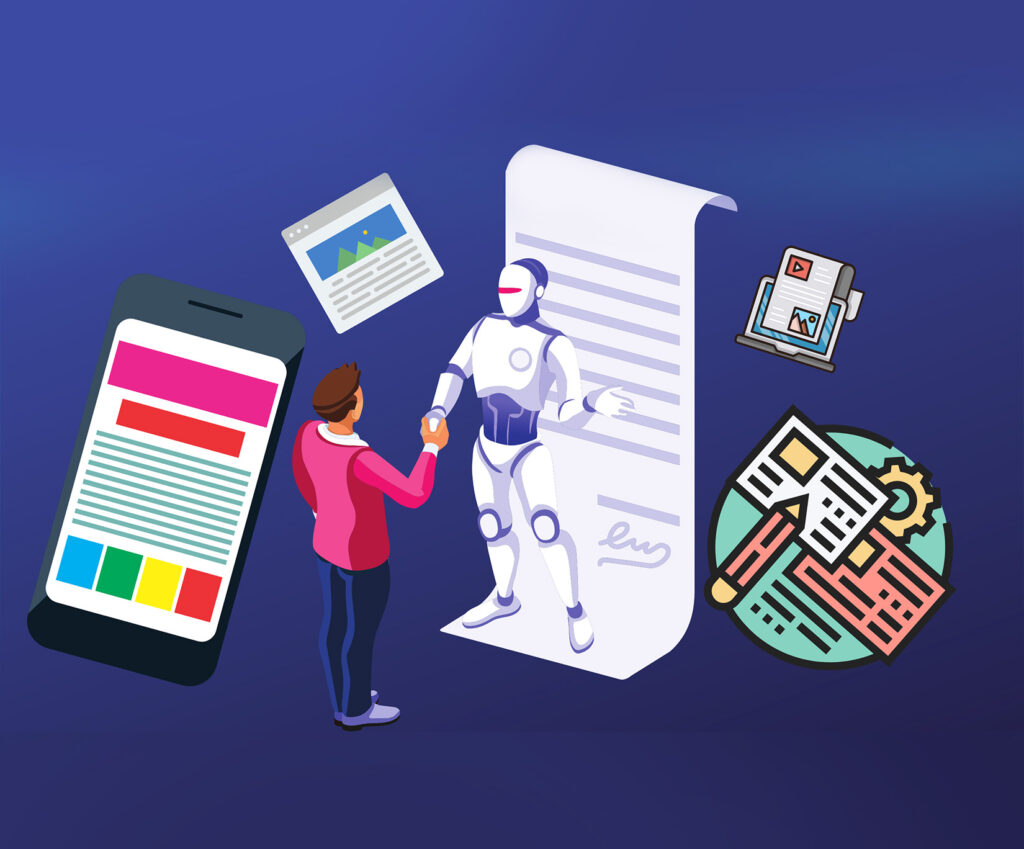
What Is AEO? Introducing Generative Engine Optimization
Answer Engine Optimization (AEO) is the practice of optimizing for AI-based search engines and conversational platforms. Think of it as the evolution of SEO, reimagined for tools like:
- Perplexity (which cites sources in responses)
- You.com
- ChatGPT with browsing
- Google SGE (Search Generative Experience)
Where SEO is about being ranked, AEO is about being referenced.
These AI engines often quote, link to, or paraphrase content. AEO helps ensure your brand’s content is:
- Discoverable by AI crawlers and retrievers
- Structured for AI citation and reference
- Trusted as a reliable source by generative algorithms
Together, LLMO and AEO form a dual-layered strategy for the future of digital visibility.
Why LLMO and AEO Matter More Than Ever
The Decline of the Click
We’ve entered the zero-click era, where generative answers mean users don’t need to click through to your website. This has profound implications:
- Organic CTRs (click-through rates) are falling
- Even top-ranking pages see fewer visits
- Users trust AI-summarized answers more than traditional snippets
The Rise of AI-Mediated Discovery
Increasingly, business leaders, researchers, and consumers are turning to LLMs for fast, conversational insight. For B2B brands especially, being included in the answer is the new mark of authority.
Visibility ≠ Ranking
It’s possible to rank #1 on Google and be ignored by generative tools—or to rank nowhere and still be quoted in ChatGPT. AEO is how you bridge that gap.
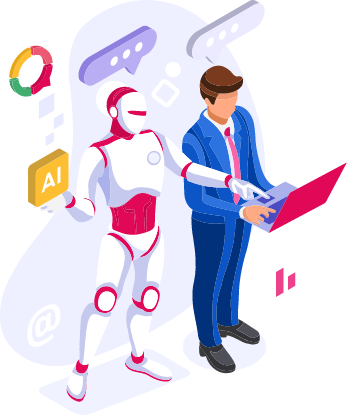
How LLMs Consume and Cite Content
To optimize for LLMs, we need to understand how they work:
- LLMs prefer clear, authoritative content with natural language flow
- They extract structured insights—especially from lists, FAQs, and headers
- They trust brands with high topical authority (frequent mentions, consistency, backlinking)
In short, LLMs reward what humans also value: clarity, expertise, and relevance. But unlike humans, they need structure and signals to understand your content’s reliability.
Core Tactics for LLMO and AEO Success
1. Create Conversational, Contextual Content
LLMs are trained on how people speak. That means:
- Write naturally, not robotically
- Use FAQs, how-tos, and question-answer formats
- Answer specific queries in plain, clear language
- Incorporate synonyms, related phrases, and user intent
Example: Instead of “Answer Engine Optimization for B2B SEO,” try “How can B2B marketers optimize their content to appear in AI-generated answers?”
2. Focus on Semantic & Long-Tail Keywords
Traditional keyword stuffing doesn’t work in LLM land. Instead:
- Emphasize search intent over search volume
- Use long-tail queries that mimic how people speak to AI
- Include variations of core terms to build contextual weight
AEO-optimized keywords:
“Cited by ChatGPT,” “content that appears in Perplexity AI,” “optimize for AI search results,” “LLMO strategy for marketing teams.”
3. Structure Content for Machine Interpretation
Just like search engines love schema, so do LLMs. Your formatting matters:
- Use clear H1, H2, H3 structure
- Break up walls of text with bullets and numbered lists
- Use tables, charts, and bolded terms for scannability
- Add schema markup (FAQPage, HowTo, Article) to signal intent
Tools like Perplexity often favor clearly segmented guides over narrative-only blog posts.
4. Build Depth, Authority, and Relevance
LLMs reference content that feels complete and authoritative. That means:
- Go deep—1,500+ words often outperform thin content
- Back up points with data, quotes, and examples
- Demonstrate topical consistency across your site (e.g., multiple blogs on LLMO, AEO, AI content strategy)
Your brand needs to sound like and act like an expert.
5. Optimize Metadata & Internal Links
AI tools ingest metadata. Be intentional:
- Write natural-language meta titles and descriptions
- Use internal links to cluster related content and establish authority on a topic
- Include descriptive anchor text (e.g., “see our guide to AI-ready content”)
This not only helps traditional SEO—it gives AI models contextual signals that elevate your visibility.
6. Citations, Mentions & External Signals
Generative models often cite based on frequency and trust. You can increase your chances by:
- Earning backlinks from high-authority sites
- Using original statistics or frameworks worth referencing
- Publishing on reputable third-party platforms (e.g., Medium, Substack, LinkedIn)
Pro Tip: AI models love linking to well-structured thought leadership—especially if it includes unique data, expert commentary, or industry frameworks.
7. Monitor Your AI Visibility
You can’t improve what you don’t measure. Use tools to:
- Search your brand in ChatGPT, Gemini, and Perplexity
- Look for citations, summaries, or paraphrased answers
- Track whether your domain is being pulled in AI overviews
As this space evolves, visibility in generative search may become a key digital marketing KPI.

What LLMO + AEO Mean for Marketers
SEO isn’t dead—but it’s evolving. Marketing teams who embrace LLMO and AEO will:
- Increase their AI-era visibility
- Reduce dependency on traditional SERPs
- Future-proof their content investments
- Position their brand as an authoritative, AI-trusted resource
In short, it’s not enough to be seen. You need to be cited. Trusted. Used.
Let’s Talk About Your AI Visibility
At Bluetext, we help brands thrive in the age of AI search. From content strategy to metadata, structure, and authority-building, we craft marketing that performs across platforms—including the ones without a click-through.
Reach out today to ensure your content gets seen, cited, and surfaced—wherever your audiences are searching.
In today’s digital-first world, B2B SaaS companies face increasing competition for attention. As buyers shift to using AI-powered tools like ChatGPT and Microsoft Copilot for research and decision-making, traditional SEO is no longer enough. Answer Engine Optimization (AEO) is emerging as the new frontier to ensure your SaaS products are visible, relevant, and compelling within AI-driven search environments.
What is Answer Engine Optimization (AEO)?
AEO involves optimizing your digital content so that AI generative engines can easily interpret, extract, and surface your information in conversational search results. Unlike traditional SEO that targets keyword rankings on search engine results pages (SERPs), AEO focuses on clarity, context, and structured data that AI models use to generate natural language responses.
Why AEO is Critical for B2B SaaS Companies
The B2B SaaS buyer’s journey is complex, often involving multiple stakeholders and stages of research. Generative AI engines simplify this process by providing quick, accurate answers through conversational interfaces. If your SaaS content is not optimized for AEO, you risk missing out on high-intent traffic channeled through AI-powered searches.
Key AEO Strategies for SaaS Companies
1. Create Conversational Product Descriptions
Write product pages that mimic how customers naturally ask questions about your SaaS offerings. Use language that addresses pain points, benefits, and solutions clearly.
2. Build and Optimize Knowledge Bases
Develop comprehensive FAQs and support documentation structured with clear headings and concise answers. This helps AI engines pull precise snippets for user queries.
3. Leverage Schema Markup for SaaS Features
Implement structured data for product details, pricing, reviews, and integrations to enhance AI comprehension and eligibility for rich results.
4. Use Use Case Storytelling
Share specific scenarios where your SaaS solves customer challenges. AI engines favor content that provides context-rich examples rather than generic descriptions.
5. Focus on Semantic Keyword Integration
Beyond exact keywords, incorporate related terms and phrases that reflect how users converse with AI assistants. This improves your content’s contextual relevance.
How AEO Supports SaaS Marketing Goals
Optimizing for AEO benefits SaaS marketers by:
- Increasing AI-driven lead generation through higher visibility in conversational answers.
- Reducing friction in the buyer journey by providing instant, relevant information.
- Enhancing brand authority as a trusted, AI-recognized source of knowledge.
- Expanding reach in voice search and digital assistants commonly used by business professionals.
Common Challenges and How to Overcome Them
Many SaaS companies struggle with AEO because their content is overly technical or keyword-stuffed, which AI engines can misinterpret or penalize. To succeed:
- Simplify language without losing industry accuracy.
- Avoid jargon-heavy text by including clear definitions.
- Regularly audit and update your content to keep pace with product changes and AI algorithm updates.
Answer Engine Optimization is essential for B2B SaaS firms aiming to thrive in the age of AI search. By integrating AEO strategies into your marketing efforts, you ensure your solutions are discoverable, credible, and persuasive to the modern buyer.
If you want to future-proof your SaaS marketing with advanced AEO tactics, contact Bluetext today for expert guidance and support.
It’s easy to think of brand reputation as something soft—sentiment, social buzz, or how people feel about your name. But in today’s marketing environment, reputation isn’t just perception. It’s infrastructure.
With the rise of AI-driven tools and generative search engines, your brand’s reputation isn’t just being observed—it’s being modeled. The language used to describe you, the consistency of your message, and the credibility of the sites linking back to you are all shaping how search engines and AI systems categorize and recall your business.
This isn’t about visibility in the traditional sense. It’s about structural presence—your reputation layer—the ambient signals that define your brand online, whether you control them or not.
From Awareness to Infrastructure
For years, digital marketers chased brand awareness. We built impressions, optimized for reach, and reported on vanity metrics. But the game has changed.
Today, AI models and search engines don’t just index content—they synthesize it. When someone asks a tool like ChatGPT or Google’s Search Generative Experience about your company, the system responds based on everything it has seen, learned, and inferred.
At that moment, your brand isn’t represented by your latest campaign or homepage headline. It’s represented by the composite reputation you’ve built across the web. That includes:
- How often your brand is mentioned
- What words are used to describe you
- Who links to your site
- Whether those links appear in trustworthy contexts
- And how consistently all of the above aligns
In short: your brand’s reputation is shaped by the web’s memory—and your job is to help shape what that memory retains.

The Reputation War Is a War of Memory
Let’s break it down. A better competitor doesn’t need a bigger ad budget to win. They just need to appear:
- More consistently described
- Across more trustworthy sources
- With fewer contradictions and more clarity
This creates what we call the reputation layer—a foundation of consistent, contextual, and credible digital signals that strengthens how your brand is understood by algorithms and humans alike.
Think of it like digital compounding interest. Each consistent mention, backlink, and structured data point strengthens your standing not just in Google rankings, but in the semantic networks that AI systems build behind the scenes.
Generative Engine Optimization: The Next Frontier
Traditional SEO is still important, but it’s no longer enough.
Enter Generative Engine Optimization (GEO)—a newer discipline focused on influencing how generative AI tools perceive and recall your brand.
Where SEO focuses on rankings, GEO focuses on representation. That means building the kind of consistent, contextual footprint that models use to answer questions, complete prompts, and offer recommendations.
GEO tactics include:
- Using consistent brand language across all digital channels
- Securing high-authority mentions and backlinks
- Creating well-structured, easily digestible content
- Optimizing metadata, schema, and semantic associations
- Encouraging trusted third-party coverage and citations
In GEO, the goal is not just to be seen—it’s to be understood accurately and repeated confidently by systems that influence buying behavior.

Consistency Is No Longer Optional
If your homepage says one thing, your press release says another, and your LinkedIn profile tells a third story, you’re not just confusing customers—you’re confusing the system.
And systems don’t forget.
Every inconsistency across your digital presence introduces ambiguity. That ambiguity weakens your authority, makes your content harder to categorize, and reduces the likelihood of your brand being surfaced in search or summarized in generative answers.
Consistency, on the other hand, creates semantic strength. It gives both humans and machines a clear, repeatable understanding of what your brand stands for, what you do, and why you matter.
Where Reputation Lives: Building Your Brand’s Memory Layer
To strengthen your brand’s reputation layer, focus on these four pillars:
1. Consistency Across Channels
Ensure your messaging, brand descriptors, and visual identity are aligned across every digital touchpoint—from your website to your social media bios to your executive bios on third-party sites.
2. Contextual Placement
It’s not just about where you’re mentioned. It’s about how you’re mentioned. Are you cited as a leader? Are you associated with innovation, security, growth? The language around your brand matters just as much as the link itself.
3. Credibility of Sources
Backlinks from high-authority websites (think trade publications, well-regarded industry blogs, or news outlets) send trust signals to both search engines and AI models. A citation in a reputable source can be more impactful than 100 low-quality mentions.
4. Structured Content
Make it easy for machines to parse your content. Use headers, schema markup, and plain language to reinforce key themes. Structure reinforces clarity—which reinforces trust.
Strategic Questions to Ask Right Now
If you want to gauge the strength of your brand’s reputation layer, start with these questions:
- Is our brand described consistently across all third-party platforms?
- Are we being cited or mentioned by credible sources?
- Do we control our entries in structured data repositories like Wikidata?
- Have we earned relevant backlinks from trusted websites?
- Does our messaging align across sales, marketing, PR, and executive thought leadership?
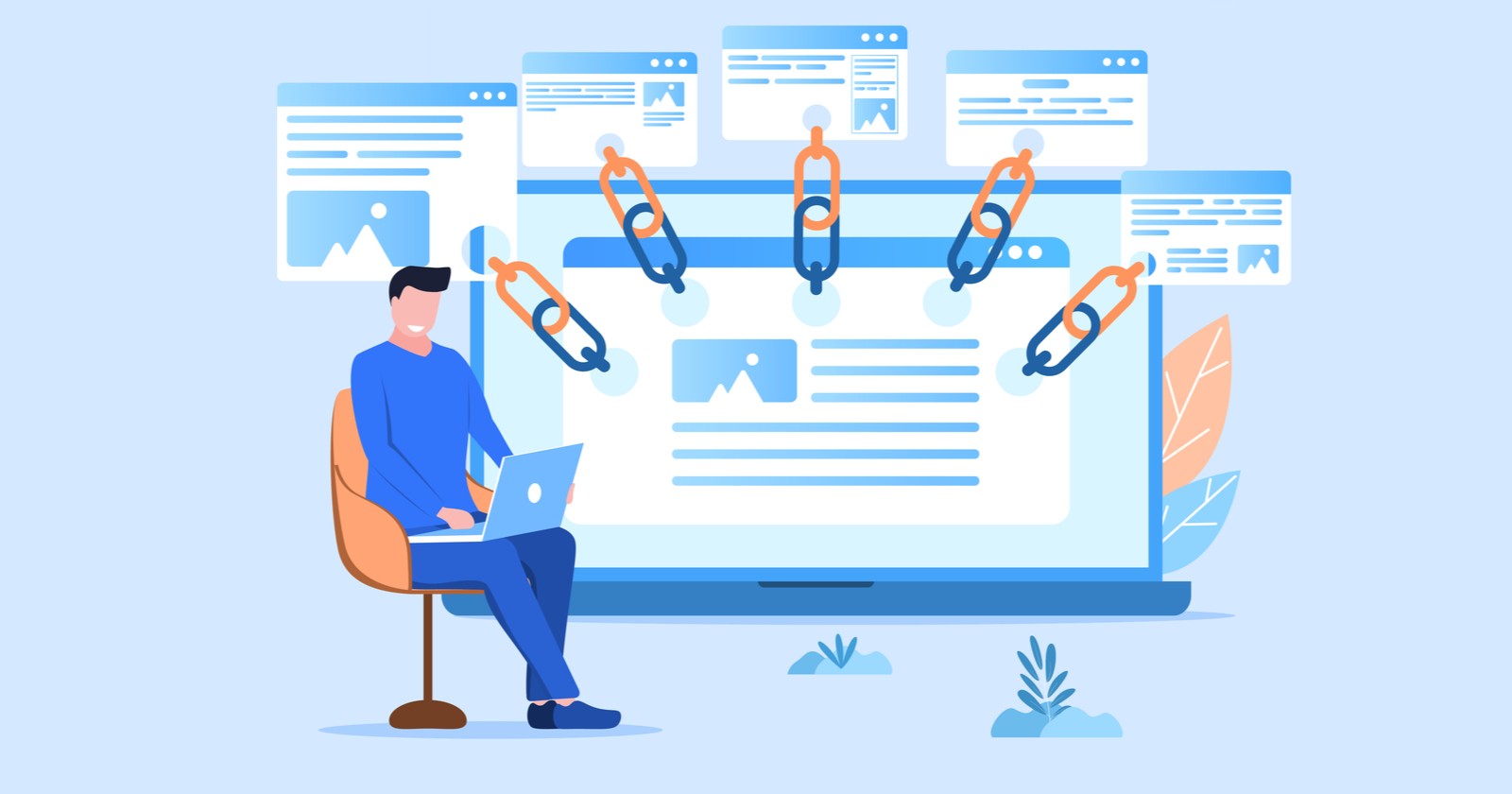
A Coherent Brand Is a Competitive Advantage
The brands winning today aren’t just investing in performance ads or clever copy. They’re investing in coherence.
They’re managing not just their content, but the context around their content. They’re shaping how others talk about them. And they’re being rewarded with better placement, more accurate representation, and stronger recall in both search engines and AI-generated responses.
If your brand is scattered, the system remembers that. But if your brand is disciplined, reliable, and strategically visible—the system rewards that too.
Reputation Is the New Brand Infrastructure
Inclusion is everything. But inclusion without control is chaos. That’s why reputation is no longer just a PR concern—it’s part of your core marketing infrastructure.
In an AI-first landscape, your brand’s reputation layer is one of the most powerful assets you have. Treat it like infrastructure. Maintain it. Reinforce it. Strengthen it over time.
Because the next time someone asks an AI about your business, it’s your reputation—your digital residue—that will answer.
Want to Strengthen Your Brand’s Reputation Layer?
Bluetext helps organizations build consistent, contextual brand infrastructure that performs across SEO, AI search, and beyond. Whether you need help aligning your message, earning the right mentions, or auditing your digital footprint—we’re here to help.
Contact us today to get started.
Answer Engine Optimization (AEO) is no longer just a buzzword—it’s a crucial strategy for companies looking to thrive in the age of AI-driven search. With conversational AI tools like ChatGPT, Microsoft Bing Chat, and other generative models transforming how users seek and receive information, optimizing for AEO means adapting your digital content to be AI-friendly, context-rich, and semantically meaningful.
Why Traditional SEO Isn’t Enough in the AI Era
Traditional SEO techniques focus largely on keyword rankings, backlinks, and technical site health to improve visibility on standard search engines. While these remain important, generative AI engines evaluate content differently. They emphasize:
- Contextual relevance over keyword density.
- Clear, authoritative answers over content volume.
- User intent understanding rather than just query matching.
This shift means marketers need to rethink how they create and structure content for better performance in AI-powered search results.
Advanced AEO Strategies for Marketers
1. Optimize Content for AI “Answer Engines”
AI engines generate responses based on data patterns and context. Provide clear, concise answers within your content, especially near the beginning of pages or sections. Think like a helpful AI assistant—what’s the best way to deliver your key message in one or two sentences?
2. Implement Rich Data Integration
Supplement your content with structured data, knowledge graphs, and linked data. This allows AI to connect the dots between concepts and entities, enhancing your content’s discoverability and trustworthiness.
3. Focus on User Intent with Conversational Content
Map out your audience’s common questions and conversational queries. Develop content that anticipates follow-up questions and provides layered information to satisfy deeper exploration.
4. Enhance Content with Multimedia and Interactive Elements
Generative engines often pull from diverse content types. Include images with descriptive alt text, videos with transcripts, and interactive tools that provide additional context or personalized information.
5. Maintain Content Freshness and Authority
AI models favor up-to-date information. Regularly update your content to reflect new data, trends, or insights. Also, build author authority by linking to credible sources and showcasing expert authorship.
6. Leverage AI Tools to Audit and Improve AEO Readiness
Use emerging AI tools to analyze your content’s effectiveness for generative engines. Tools can help you identify gaps in context, relevance, and structure, guiding optimization efforts.
Common Pitfalls to Avoid in AEO Optimization
- Overloading content with keywords—AI values natural language, not keyword stuffing.
- Neglecting schema markup—structured data is critical for AI comprehension.
- Ignoring user experience—slow load times and confusing layouts reduce content’s value.
- Publishing vague or generic content—AI favors specificity and clarity.
Measuring Success in AEO
Tracking AEO performance requires a new set of metrics:
- Visibility in AI-powered answer boxes and chat responses.
- Engagement with conversational AI interfaces.
- Direct traffic from voice and AI assistant queries.
- Improved brand mention and citation in AI-generated content.
Combine these with traditional SEO KPIs for a comprehensive view of your digital presence.
Getting Started with AEO: Practical Steps for Your Company
- Conduct a content audit focusing on clarity, structure, and relevance for AI.
- Add or improve schema markup across your site.
- Develop a knowledge base or FAQ section optimized for conversational queries.
- Train your content team on writing for AI comprehension.
- Experiment with AI tools to refine your AEO strategy continually.
The Future is AEO — Are You Ready?
Answer Engine Optimization is transforming how companies compete in search and content discovery. By mastering advanced AEO strategies, you can ensure your brand stands out in AI-driven conversations and captures new audiences where traditional SEO alone falls short.
At Bluetext, we help forward-thinking companies navigate this new frontier with tailored AEO strategies that integrate seamlessly with existing marketing efforts. Ready to elevate your AI search presence? Get in touch with Bluetext today.
For decades, marketers and UX designers have relied on user personas—fictional characters based on audience research—to guide everything from product design to messaging strategy. Traditionally, these personas were static snapshots built from demographic surveys, anecdotal feedback, or past performance data.
But in today’s fast-paced digital environment, that’s no longer enough.
Enter synthetic personas: AI-generated user models that simulate real behaviors, preferences, and decisions. These dynamic profiles are created and refined by machine learning algorithms, offering marketers a revolutionary way to predict and respond to user needs in real time. From hyper-personalized campaigns to user experience testing, synthetic personas are changing how we approach customer research—forever.
What Are Synthetic Personas?
Synthetic personas are virtual representations of target users generated by artificial intelligence. Unlike traditional personas, which are often generalized and manually built, synthetic personas draw from vast and varied data sources to reflect real, evolving user behavior.
Using behavioral data, digital footprints, and predictive algorithms, synthetic personas provide marketers with insight into not just who their customers are, but how they think, what they want, and when they’re likely to act.
Key characteristics of synthetic personas:
- Data-driven and dynamically updated
- Capable of simulating real-time decisions
- Built using machine learning models that analyze patterns across large datasets
- Scalable for large, segmented, or niche audiences
How AI Builds Predictive User Models
At the core of synthetic personas is artificial intelligence, particularly machine learning techniques like clustering, neural networks, and behavioral modeling. These models digest inputs from sources such as:
- Web analytics and browsing behavior
- CRM and transaction history
- Social media activity
- Survey data and customer feedback
- IoT and mobile app usage
By identifying behavioral patterns and correlations, AI generates models that not only reflect current user characteristics but can also predict future actions. Some tools even simulate how users will respond to changes in product offerings, content strategies, or pricing models—before any real-world testing occurs.
Popular tools in the space include:
- Delve AI – for real-time persona generation based on website traffic
- UneeQ – for creating conversational AI personas
- Quantilope – for automating consumer research and segment analysis

Why Synthetic Personas Matter for Marketers
In an era where personalization is the expectation, synthetic personas provide a competitive edge. They empower brands to:
- Deliver hyper-personalized messaging across campaigns and channels
- Identify micro-segments previously invisible in traditional datasets
- Optimize campaigns quickly, with faster test-and-learn cycles
- Reduce reliance on surveys and time-consuming focus groups
By simulating user reactions to content, offers, and UI changes, synthetic personas allow marketers to fine-tune strategies before launching to a broader audience—minimizing risk and maximizing ROI.
Applications in UX Design and Digital Experience
Synthetic personas are also transforming how digital products and experiences are tested and optimized. Rather than relying solely on in-person testing or anecdotal feedback, designers can:
- Simulate how different persona types navigate a website or app
- A/B test messaging or design elements with virtual users
- Test edge cases (e.g., users with accessibility needs or extreme preferences)
- Design inclusively for underrepresented demographics
In many cases, synthetic personas serve as a powerful pre-validation layer before real-world UX testing.

Ethical and Practical Considerations
As with any AI-driven solution, there are considerations to keep in mind:
- Data bias: Synthetic personas are only as accurate as the data used to train them. Biases in the source data can lead to flawed outputs.
- Privacy and transparency: Brands must ensure their synthetic persona modeling adheres to data privacy regulations and ethical standards.
- Human oversight: Synthetic personas should complement—not replace—real user insights. They’re most powerful when used alongside traditional research methods.
Knowing when and how to deploy synthetic personas is essential to ensure insights remain grounded in reality.
How Brands Can Get Started with Synthetic Personas
Ready to explore AI-generated personas? Start by taking these steps:
- Audit your data – Ensure you have clean, structured behavioral data to feed AI models.
- Define your goals – Are you trying to improve UX, refine messaging, or explore new audience segments?
- Choose the right tool – Platforms like Delve AI, UneeQ, or even custom-built ML models can fit different use cases.
- Validate results – Cross-check AI-generated insights with actual user research or campaign performance.
- Iterate and evolve – Like real users, synthetic personas should evolve as your audience and offering change.
The Future of AI-Driven Customer Understanding
Synthetic personas are just the beginning. As generative AI continues to advance, brands will soon be able to create digital twins of customers—virtual users who mirror real-world behavior in real time. These twins will power everything from product prototyping to automated customer service interactions, making user research not just faster, but predictive and adaptive.
For industries like B2B SaaS, cybersecurity, government contracting, and healthcare, the implications are massive. AI can help brands navigate complex buyer journeys, long sales cycles, and diverse stakeholder personas—all while maintaining a data-driven edge.
Want to Reach the Right Personas—Real or Synthetic?
At Bluetext, we help brands unlock the power of AI to better understand, engage, and convert their audiences. Whether you’re exploring synthetic personas or refining your digital experience with real user data, we can help.
Contact us to explore how AI-generated personas can sharpen your messaging and drive measurable results.
As artificial intelligence (AI) continues to revolutionize the digital landscape, a new form of optimization has emerged—Answer Engine Optimization (AEO). Unlike traditional Search Engine Optimization (SEO), which focuses on improving website rankings on keyword-based search engines like Google, AEO targets optimization for AI-powered generative engines such as ChatGPT, Bing Chat, and other conversational AI systems.
Generative engines generate responses, summaries, and content dynamically, relying heavily on the context and quality of the underlying data. AEO is about tailoring your digital assets—websites, content, and metadata—to be more accessible, relevant, and valuable for these AI models. This new form of optimization is critical as more users turn to AI assistants for answers rather than traditional search results.
How AEO Differs from Traditional SEO
Traditional SEO:
- Focuses on keywords, backlinks, site structure, and user experience to improve rankings on search engines.
- Relies on crawlers and indexing mechanisms to understand and rank static content.
- Users typically scan a page or click through links to find answers.
Answer Engine Optimization (AEO):
- Focuses on the context, clarity, and structured data that AI models use to generate natural language responses.
- Requires content designed for AI comprehension, including well-structured, authoritative, and factual information.
- Encourages semantic richness and integration of data sources that feed generative models.
- Often involves optimizing for “featured snippet” style answers and conversational formats.
Why AEO Matters for Companies
With generative AI becoming a primary way people seek information, companies that fail to optimize for AEO risk losing visibility in these new AI-powered interfaces. AEO can help brands:
- Gain visibility in AI chat results and voice assistants.
- Improve content discoverability in conversational search contexts.
- Build brand authority in emerging AI ecosystems.
- Capture new leads and customers by providing precise, AI-friendly answers.
Top Tips to Optimize Your Company for AEO
1. Create Clear, Structured, and Concise Content
Generative engines prefer content that is easy to parse and understand. Use headings, bullet points, and numbered lists to break down complex topics clearly.
2. Incorporate Semantic Keywords and Natural Language
Instead of focusing solely on exact-match keywords, integrate related terms and natural conversational phrases to align with how people ask questions verbally.
3. Leverage FAQs and Q&A Sections
Frequently asked questions and their answers help AI models quickly extract relevant information, increasing chances of being cited in generative responses.
4. Use Schema Markup and Structured Data
Enhance your content with schema.org markup to provide explicit metadata about your business, products, services, and articles, improving AI comprehension.
5. Publish Authoritative and Trustworthy Content
AI engines prioritize high-quality, fact-checked, and trustworthy content. Make sure your content is well-researched, cites credible sources, and is regularly updated.
6. Optimize for Voice Search and Conversational Queries
Many generative engines power voice assistants. Write content that answers questions naturally and succinctly to capture voice-based queries.
7. Monitor and Adapt to AI Algorithm Updates
Stay informed about changes in generative AI technology and adapt your content strategies accordingly. AEO is an evolving field, so flexibility is key.
AEO vs. SEO: Should You Shift Your Focus?
While AEO is gaining traction, it does not replace SEO—it complements it. Companies should continue strong SEO practices while gradually integrating AEO strategies to future-proof their digital presence. The synergy between traditional SEO and AEO will ensure you reach audiences across all search and AI platforms.
Embrace AEO to Stay Ahead in the AI Search Era
Answer Engine Optimization (AEO) represents the next frontier of digital marketing in a world increasingly influenced by AI-driven search and content generation. By understanding AEO and implementing these optimization tips, companies can enhance their visibility, credibility, and engagement with users in this rapidly evolving ecosystem.
If you’re ready to optimize your content for the future of AI search and generative engines, contact Bluetext today. We specialize in helping companies navigate new digital frontiers with smart, data-driven marketing strategies.